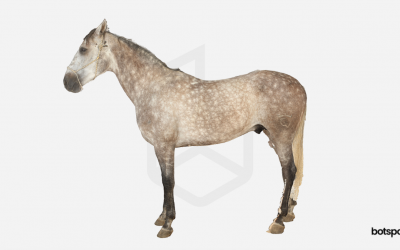2D PHOTOGRAPHS VS 3D MODELS
INTRODUCTION
In the field of digital media, two forms of imagery are prevalently used: 2D photographs and 3D models.
A photograph provides you with a flat, realistic view of an object or a scene. The image has two dimensions: height and width, so you see both the object and background from a single viewpoint. You are basically capturing what you see from one specific perspective at a very specific moment of time – like a frozen memory.
A 3D model is an isolated resemblance of an object in three dimensions: height, width and depth. This enables you to turn it or (with the help of a VR headset) walk around it, viewing it from every possible perspective. This offers a more dynamic view and greater possibilities than 2D photographs alone.
DIFFERENCES IN USING 2D AND 3D
Dimensional Perspective
2D photography captures images only in two dimensions, offering a flat view. In contrast, 3D modeling adds depth, allowing for a more comprehensive, multi-angle representation. This is particularly useful in interactive fields like virtual reality, simulations, design and entertainment (like special effects in movies or realistic scenes in computer games). A 3D model isn’t just a simple image shown on a screen, but a model that looks and “behaves” like a real object and can be viewed in real time.
With help of AR applications (AR = augmented reality), it is possible to place a virtual sculpture in a real room and walk around it – just grab your smartphone and try it out yourself:
Creation and Customisation
Capturing a 2D photo typically involves a focus on composition, lighting, and timing, with limited post-capture editing. 3D modeling, however, is created through scanning, which involves a scanner like our BOTSCAN NEO (for scanning people) or BOTSCAN MOMENTUM (for scanning objects) and use of specialized software.
The lighting, shadows, reflections and characteristics of the surface are adjusted depending on the perspective. So a watch on a wrist reflects the light in a different way than human skin, leather shoes or clothes. It offers extensive control over the final product, allowing for significant alterations and customizations.
Application Flexibility
2D photographs are best for projects needing authentic, real-world representation (e.g. fashion, documentation, food, etc.). 3D models are preferred in areas requiring adaptability and interaction, such as animations, gaming, product design and creating experiences.
Real-Life vs Digital
While 2D photographs excel in capturing real-life details, they offer limited scope for alteration. 3D models, on the other hand, provide vast creative freedom, enabling the creation of anything from realistic simulations to imaginative worlds.
Choosing Between 2D and 3D
The choice between using 2D photographs and 3D models depends on the project’s requirements, budget and target audience. 2D photography is suitable for capturing real-life scenes from one perspective, whereas 3D modeling is preferable for interactive and imaginative projects like product visualization, full-body scanning and reverse engineering.
Here at botspot, we can help to make the right choice for your project. Contact us here.
Examples:
3D Model
2D Picture




